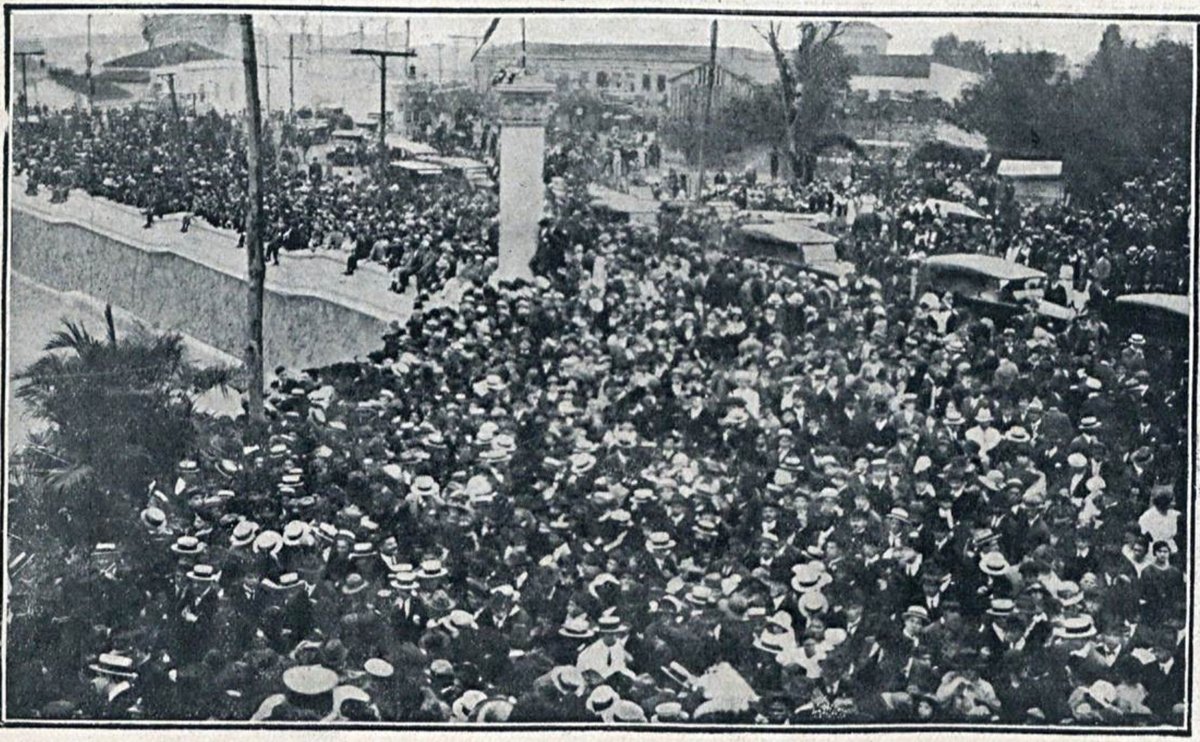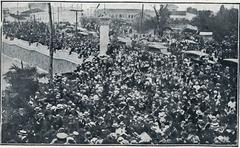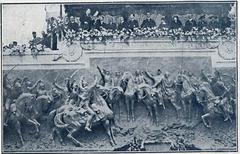
Monument to the Independence of Brazil: Visiting Hours, Tickets, and Historical Significance in São Paulo
Date: 03/07/2025
Introduction
The Monument to the Independence of Brazil, located in São Paulo’s historic Ipiranga district, is a landmark that commemorates the nation’s declaration of independence from Portugal on September 7, 1822. Situated within the beautifully landscaped Independence Park (Parque da Independência), the monument not only honors the “Cry of Ipiranga” by Prince Regent Dom Pedro but also offers visitors an immersive experience in Brazil’s rich cultural and historical heritage. Designed by Ettore Ximenes and Manfredo Manfredi, the monument features a blend of neoclassical, baroque, and Art Nouveau styles, with granite and bronze sculptures narrating key episodes in Brazil’s path to sovereignty (Wikipedia; São Paulo Secreto; Museu da Cidade de São Paulo).
Table of Contents
- Introduction
- Monument History and Symbolism
- Visiting the Monument
- Travel Tips
- Nearby Attractions
- Frequently Asked Questions
- Summary & Final Tips
- References
Monument History and Symbolism
Proclamation of Independence
The monument marks the site where Dom Pedro I declared Brazil’s independence from Portugal in 1822, an event known as the “Cry of Ipiranga” (“Grito do Ipiranga”). This pivotal moment is immortalized by the monument’s location along the historic Ipiranga Brook and is a touchstone of Brazil’s national identity (Wikipedia; São Paulo Secreto).
Design and Construction
The idea for a grand monument arose in the early 20th century, with a competition in 1917 culminating in the selection of Italian sculptor Ettore Ximenes and architect Manfredo Manfredi. Construction began in the lead-up to the 1922 centenary celebrations and was completed in 1926. The monument’s inauguration on September 7, 1922, marked 100 years of independence (Museu da Cidade de São Paulo; Recreio).
Artistic Features and Symbolic Elements
Blending neoclassical, baroque, and Art Nouveau influences, the monument is constructed of granite and adorned with dramatic bronze sculptures. The central bronze relief is inspired by Pedro Américo’s painting “Independência ou Morte,” showing Dom Pedro I on horseback at the declaration moment. Flanking sculptural groups honor the Inconfidência Mineira and Pernambucan Revolutionaries, precursors to independence (Museu da Cidade de São Paulo; Wikipedia).
Key decorative motifs include allegorical statues of Liberty and Justice, laurel wreaths, and symbols of federal, state, and municipal powers, reflecting the structure of the Brazilian republic. The monument stands approximately 20 meters (65 feet) tall, set on a multi-tiered platform surrounded by formal gardens (Audiala).
The Imperial Crypt and Chapel
In 1972, a crypt and chapel were constructed beneath the monument to house the remains of Dom Pedro I, Empress Leopoldina, and Amélie of Leuchtenberg, transforming the site into a pantheon for national heroes (Touristlink). The crypt is open to visitors and features neoclassical details and stained-glass windows.
The Monument’s Role in National Memory
The monument is the epicenter of Independence Day celebrations every September 7, hosting ceremonies, parades, and cultural events. It serves as a point of civic pride, education, and reflection, drawing school groups, tourists, and history enthusiasts year-round (São Paulo Secreto; Trek Zone).
Visiting the Monument
Location and Getting There
- Address: Praça do Monumento, s/n - Ipiranga, São Paulo - SP, 04261-050, Brazil (Trip.com).
- Public Transport: The nearest metro station is Sacomã (Line 2 – Green); from there, visitors can take a short bus ride or walk. The site is also accessible via multiple bus lines.
- Parking: Limited street parking is available nearby; weekends and holidays tend to be busiest.
Visiting Hours and Admission
- Monument and Crypt: Open Tuesday to Sunday, 9:00 AM to 5:00 PM.
- Independence Park: Open daily from early morning until dusk.
- Admission: Free for both the monument and park. Donations are accepted for maintenance. Admission to the adjacent Museu Paulista (Ipiranga Museum) requires a ticket (Nomadic Matt).
Accessibility
- The park and monument grounds are mostly wheelchair accessible with paved paths and ramps, but access to the crypt involves stairs. Contact park administration for specific accommodations if needed.
- Informational signs are in Portuguese and English; staff may have limited English proficiency.
Guided Tours and Events
- Guided Tours: No official tours at the monument, but local operators offer walking tours of the Ipiranga district, often including the monument. Bookings are available online or on-site.
- Special Events: Large ceremonies and parades are held on Independence Day (September 7); other cultural events and exhibitions occur throughout the year.
Travel Tips
- Best Time to Visit: Weekday mornings offer a quieter experience. The dry season (April to September) provides pleasant weather.
- What to Bring: Comfortable shoes, sun protection, water, and snacks. Restrooms are available near entrances.
- Safety: The park is generally safe, but standard urban precautions apply. Keep belongings secure and avoid isolated areas after dark.
- Photography: Allowed throughout the grounds; flash is prohibited inside the crypt. Drone use requires prior authorization.
Nearby Attractions
- Museu Paulista (Ipiranga Museum): Houses extensive collections on Brazil’s imperial era and independence (Nomadic Matt).
- Casa do Grito: A historic house associated with the declaration of independence, open to visitors.
- Museum of Zoology: Features natural history exhibits, located within walking distance.
- Ipiranga Neighborhood: Known for its colonial architecture and vibrant culture.
Frequently Asked Questions
Q: Are tickets required to visit the Monument to the Independence of Brazil?
A: No. Admission to the monument and park is free. Museu Paulista requires a ticket.
Q: What are the monument’s visiting hours?
A: Tuesday to Sunday, 9:00 AM to 5:00 PM. The park is open daily.
Q: Is the monument wheelchair accessible?
A: The grounds are mostly accessible, but the crypt has stairs.
Q: Can I take photos?
A: Yes, except flash photography inside the crypt. Drone use needs permission.
Q: How do I get there by public transport?
A: Take the metro to Sacomã (Line 2 – Green), then a short bus ride or walk.
Summary & Final Tips
The Monument to the Independence of Brazil is not only an architectural marvel but also a vibrant symbol of the nation’s identity, resilience, and unity. Its location at the very site of the 1822 independence proclamation, elaborate sculptures, and the solemn Imperial Crypt make it a profound destination for reflection and learning (Museu da Cidade de São Paulo; Evendo). With free admission, accessible grounds, and proximity to other cultural attractions, it is a must-see for anyone interested in Brazilian history. For the latest updates, download the Audiala app and follow local tourism resources.
References
- São Paulo Secreto: Independence of Brazil
- Museu da Cidade de São Paulo: Monumento à Independência
- Touristlink: Monument Overview
- Evendo: Monument Attractions
- Nomadic Matt: Visiting the Monument
- SuperTravelr: History of the Monumento à Independência do Brasil





































































































































































